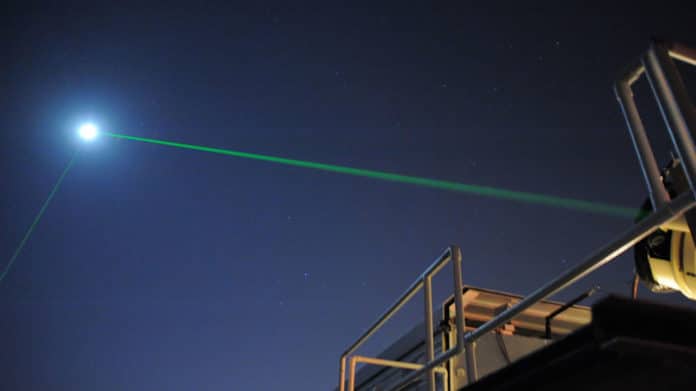Gravitational waves offer details on some of the most violent events in the Universe. Existing gravitational wave detectors scan different frequency ranges. Although, some frequencies are quite impossible to cover using current devices. These devices often harbor signals that are fundamental to understanding the cosmos. Microhertz waves, for example, are practically invisible to even the most advanced technology available today.
In the latest research, the UAB, IFAE, and University College London reported that a natural gravitational wave detector exists in our immediate environment: the Earth-Moon System. Scientists proposed using the variations in distance between the Earth and the Moon as a new gravitational wave detector within a frequency range that current devices cannot detect.
The gravitational waves constantly hit Earth-Moon System. It thereby generates tiny deviations in the Moon’s orbit. Although these deviations are minute.
Scientists planned to take advantage of the fact that Moon’s exact position is known with an error of at most one centimeter, thanks to the use of lasers sent from different observatories, which are continuously reflected upon mirrors left on the surface of the Moon by the Apollo space mission and others. This incredible precision, with an error of one billionth of a part at most, is what may allow a small disturbance caused by ancient gravitational waves to be detected.
The Moon’s orbit lasts approximately 28 days. This translates into a particularly relevant sensitivity for microhertz, the frequency range researchers are interested in.
Scientists also proposed using the information about other binary systems in the Universe that may act as gravitational wave detectors.
Diego Blas from the Department of Physics at the Universitat Autònoma de Barcelona (UAB) said, “What is most interesting perhaps is that this method complements future ESA/NASA missions, such as LISA, and observatories participating in the Square Kilometer Array (SKA) project, to reach an almost total coverage of the gravitational waves from the nanohertz (SKA) to the centihertz (LIGO/VIRGO) frequency ranges. This coverage is vital to obtaining a precise image of the evolution of the Universe, as well as its composition. Covering the microhertz frequency range is a challenge, which now may be feasible without building new detectors, and only observing the orbits of systems we already know. This connection between fundamental aspects of the Universe and more mundane objects is particularly fascinating and can eventually lead to the detection of the earliest signals we have ever seen, and thus change what we know about the cosmos.”
Journal Reference:
- Diego Blas and Alexander C. Jenkins, Bridging the μHz Gap in the Gravitational-Wave Landscape with Binary Resonances. Phys. Rev. Lett. 128, 101103. DOI: 10.1103/PhysRevLett.128.101103
